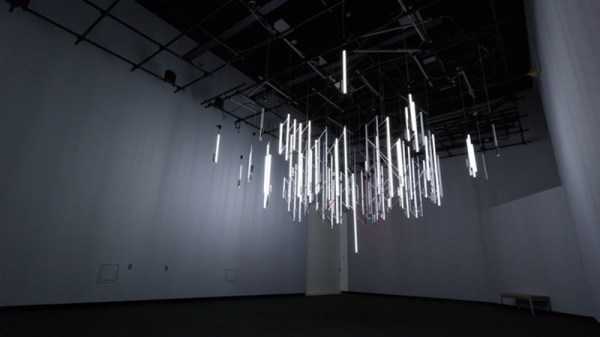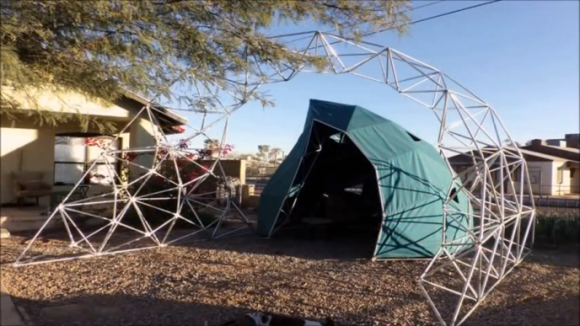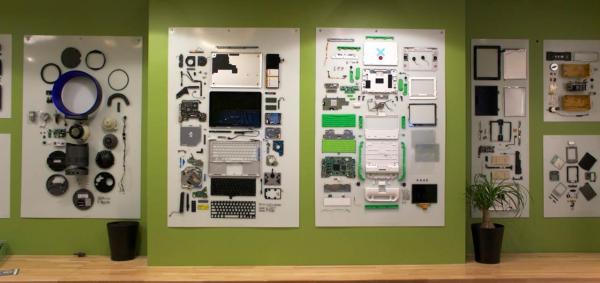A Hodoscope is an instrument used to determine the trajectory of charged particles. It’s built out of a three-dimensional matrix of particle detectors – either PIN diodes or Geiger tubes – arranged in such a way that particles can be traced along coincident detectors, revealing their trajectory.
This is not a hodoscope. It’s a chandelier. This chandelier is made of 92 individual Geiger tubes, each connected to a single LED fixture and a speaker. When a charged particle flies through the room and hits a Geiger tube, the light fixture lights up, a ‘click’ plays on the speaker, and the entire room is enveloped in light for a short moment in time. If, however, that charged particle continues on to another Geiger tube, the trajectory of the particle can be deduced.
The purpose of the installation – beside just being art or something – is to show the viewer sources of radiation and normal levels of radioactivity due to terrestrial and cosmic sources. Of course the spacing of these detectors is rather large – it’s made to fit in a gallery – and there is no connection between the detectors, making a coincident circuit impossible. If you want a real hodoscope, here you go.
This installation can be seen at the Burchfield Penney Art Center in Buffalo, NY through April 12. If you’re in the area, go there and eat a banana. Video below. Thanks [David] for the tip.


















